…would still be a crazy looking vegetable. But oh, so tasty!
My in-laws call it turai, which is what I called it before I knew there was another name. When I saw some at my local farmer’s market, I asked one of the vendors and she called it sinqua (which means “silk gourd”). I found that it was also called Chinese Okra when I watched an episode of Chopped, after which I felt mildly, and temporarily, superior because I knew how to cook it and none of the contestants had ever seen it before!
Interestingly enough, it is also called luffa and is where we get the loofahs to use as kitchen sponges or to scrub ourselves smooth. The plant is left on the vine until the skin turns yellow, allowed to dry completely, then peeled. The seeds are then shaken out and voila! You have a skin scrubber!
I’m much more interested in the edible version. Needless to say, I had never experienced this vegetable until I tasted it at my in-laws’ house, but it has become one of my favorite veggies. Sometimes my father-in-law will get some at the farmer’s market and make it when he knows I will be there for dinner :). The recipe below is for the spongy zucchini-like inside of the vegetable, but my father-in-law also makes a fantastic chutney from the skin. I haven’t learned how to make that and one of his amazing instant pot recipes chicken magic…yet.
When choosing a turai, look for unblemished gourds with even coloring and a firm but slightly spongy texture between the ridges. If it is too firm, it may be slightly woody and will make a great exfoliator, but it won’t be too great for the taste buds. Some are quite large (see picture above), but I really just look for one that is mostly straight and looks fresh.
Turai should have a silky texture and slightly sweet flavor when cooked; if it turns out bitter it may be under- or overripe, or it might have sat out too long; make sure to peel and chop it just before cooking. I made some a couple of weeks ago that was so bitter that I threw it out–so disappointing! However, that rarely happens and the next batch I made was perfect.
If you’re in the mood to try something new, this is a deliciously wonderful start. I like turai best when it is piping hot and mixed with a little rice. My mouth is watering as I type. Better make some soon!
Turai
- 2-3 Tbsp. coconut oil
- 1/3 tsp. jeera mix
- 1/2 medium-large yellow onion, sliced (about 1 cup)
- 3 cloves garlic, cut into large pieces
- 3-4 Thai chilies, sliced in half lengthwise
- 2 large turai/sinqua/Chines Okra/luffa (about 4 cups chopped)
- 1 tsp. sea salt
- 1/3 tsp. haldi
To Cook:
- Slice onions and Thai chilies and cut up garlic. Set aside.
- Heat oil in a medium size pot over medium heat. When the oil is hot, add jeera and allow it to pop for about 30 seconds. Add sliced onions and stir well. Adjust the heat so that the onions cook but do not brown or burn.
- While the onions cook, prepare the turai. You don’t want to do this too early because it may become bitter if it sits peeled too long. First, rinse the turai under cool water. Cut off the ends, peel off the ridges (I peel off all of the skin, but you can eat the softer parts between the ridges if you want to) and chop into bite-size pieces. You can leave the seeds in unless they are very hard (in which case you should toss them out).
- When the onions are mostly cooked through and are beginning to look translucent, add the garlic and chilies. Cook for a minute or two.
- Add the chopped turai, haldi and salt. Stir well and then cover tightly.
- Cook for 15 minutes, stirring occasionally.
- At this point, check to see how much liquid has released–if it is too “soupy,” remove the lid and allow to cook uncovered.
- Cook for another 10-15 minutes, or until the turai has broken down completely and texture is soft. Taste for salt and add a bit more if needed.
- Serve over some rice and enjoy!
Sources: Wikipedia, VegetablesWA
This post is linked to Kelly the Kitchen Kop’s Real Food Wednesday blog carnival.
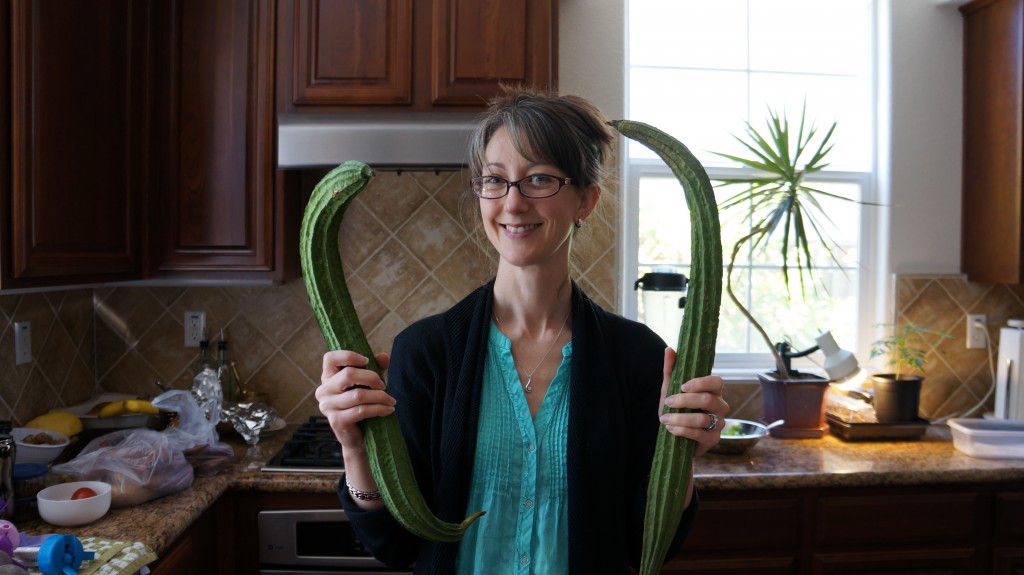
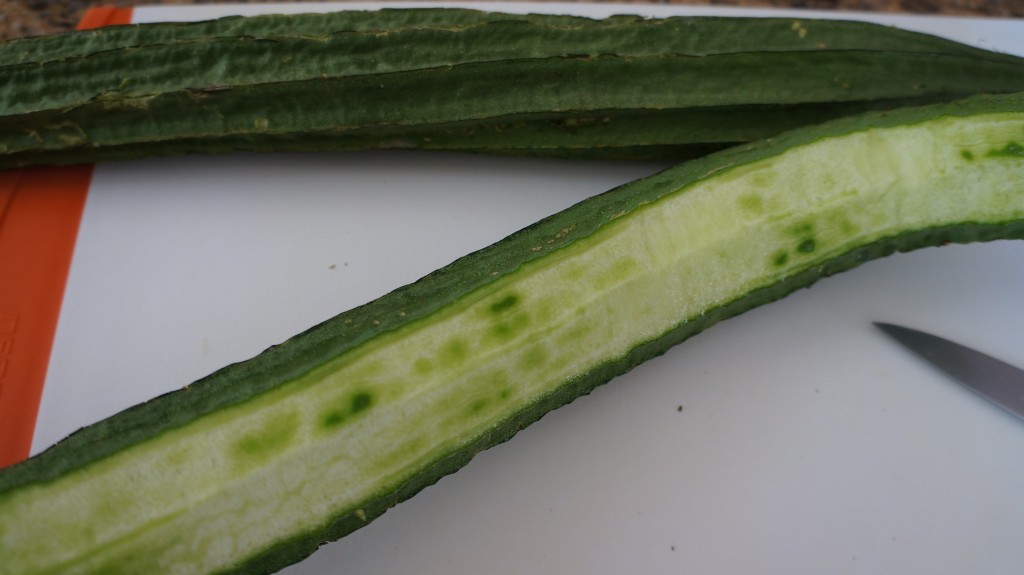
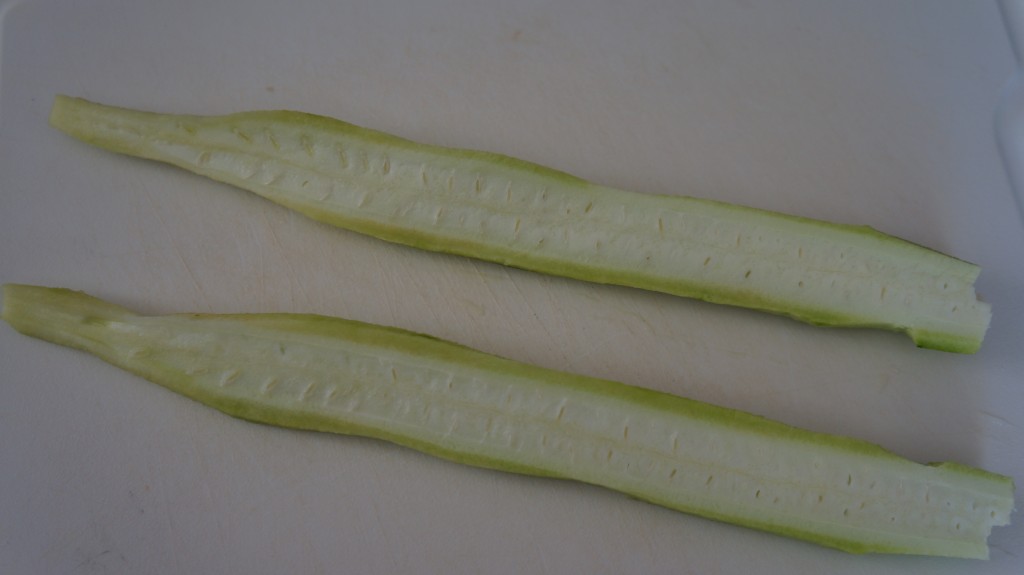
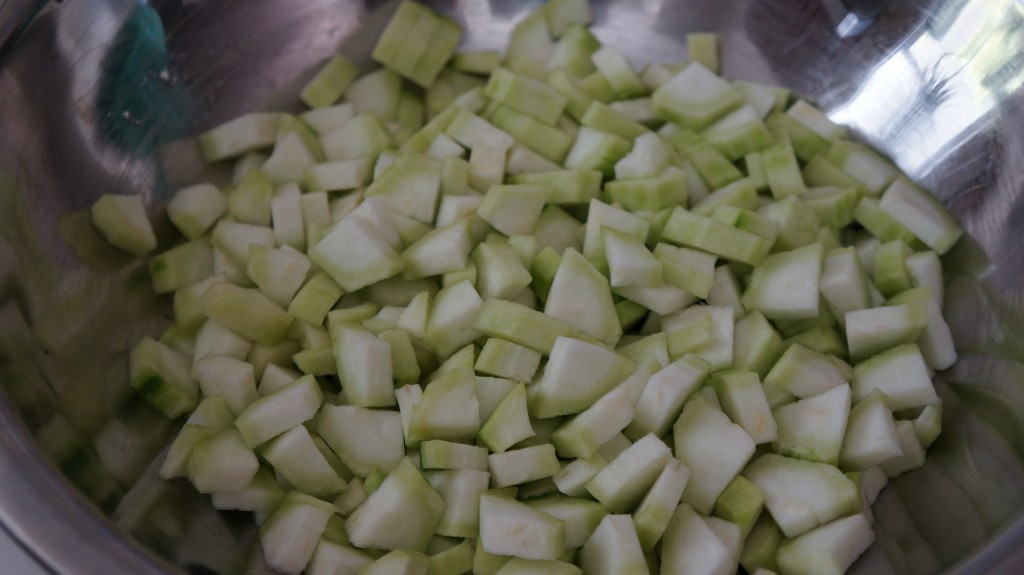
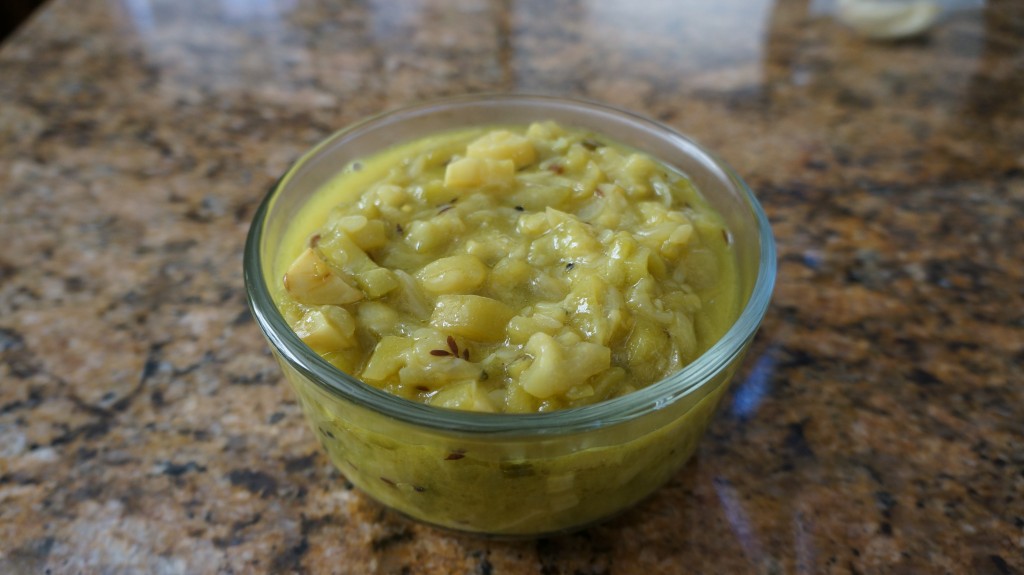

I just made some turai dish. Unfortunately, it was bitter. I am a beginner level Indian cook. I found your site while searching for “turai bitter”. I guess that the vegetable was overripe. I am not sure how I can tell in the store. This is the second time I am making this recipe. Last time it was not bitter.
I’ve had that happen, too. It shouldn’t be bitter, but sometimes I pick one that is overripe. I try to pick ones that are firm, but not woody feeling, but sometimes I think it’s just luck. I’m still learning, too!
I planted 3 vines this year. Plants yielded several good looking Chinese Okra’s,They all turned out bitter, I know that is not because of ripeness. Seems like bad seed. I ate them all my life, do not remeber coming across bitter one’s before. Some one told me bitter chinese Okra or Bottle Gourd, are poinsonous and should not eat. So I start searching for the answers, So far not found good answers!! My advice is to taste it first, if bitter thrash it, You will not enjoy any way. Do not through the good skin peelings, roast them along with Salt, onions and green peppers, Grind and stir fry with little bit of oil and spices you like. You will enjoy.
Sorry to hear they were bitter! I usually have a good outcome from the ones I buy at the farmers’ market, but sometimes I get one that is terrible. I’m not sure why they are sometimes so bitter even when they don’t seem overripe. Thanks for the comment!
Chinese okra or Luffa is in a Cucumber family. I came across an information ones that sometimes cucumbers will have bitter taste if not watered properly or if soils get too dry in between watering, they are water loving plant. They could have same result on Chinese okra..the thing is you can’t tell if it’s bitter or not til you cook them?.
That’s really interesting–thanks for sharing that with me! Yes, it’s unfortunate that you have to cook it to discover whether it’s bitter.
Also called JINGHY, JINGY, or JINGEY. Grows well in Southern Caribbean.. Possibly a staple among locals.
I haven’t heard it called that! Now I’ll be in the know if I ever go to the Carribean. Thanks!
Hello my neighbors are Chinese and always grow vegetables. Their vines always come on our side of the fence, I picked one because on our side,it is about 3.5 feet long is this over grown or is it still good? I have read how you say to cook it, just wanted to know if it was okay to cook. Not really able to communicate with neighbours. Karen
Hi Karen! Chinese okra can get pretty big (though the biggest I’ve seen is probably 2 feet long). The only way to know if it is still good is to cut it open and look inside. If the seeds are brown and hard, then it is overripe. If the inside looks white and kind of spongy, then go for it!
Taste chinese okra before cutting.
if bitter do not use that one.